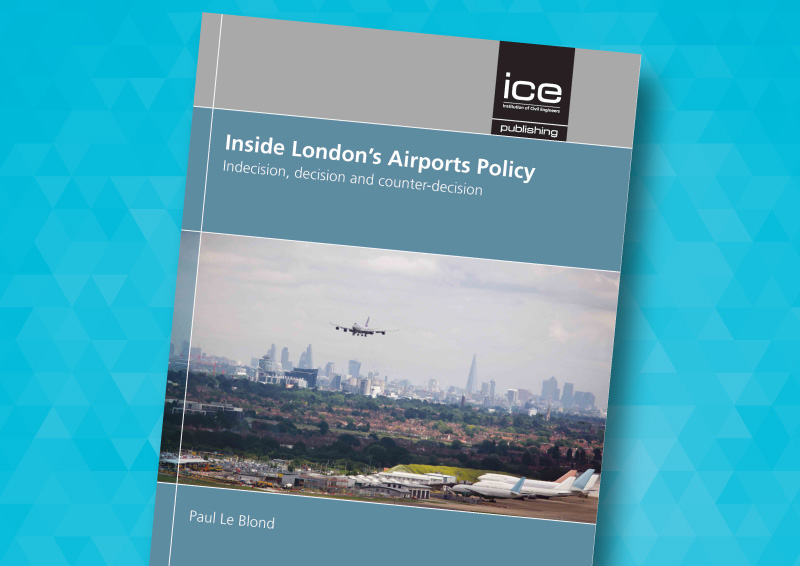Kris Beuret OBE, the Director of Social Research Associates and a social scientist with a particular interest in transport and urban policy, tells us her thoughts on London's Airports Policy: Indecision, decision and counter-decision book which provides a complete history of London’s airport policy over the past forty years to date.

- Updated: 19 Sep 2019
- Author: Kris Beuret OBE FCILT FCILT TPP
Inside London's Airports Policy: Indecision, decision and counter-decision by Paul Le Blond is all you will ever need to grasp the story of London’s airport expansion over the past 40 years. Meticulous research is combined with well-chosen headings, summary charts and references to unravel the record of “indecision, decision and counter-decision” – a quote from John Nott to the House of Commons in 1979. The plot unravels chapter by chapter with some of the most interesting new evidence stemming from the author’s obvious rapport with key stakeholders and informed by a lifetime career in the industry. This often fills gaps in documentary records due to the 30year rule. There are also insights into the difficulty of forecasting and the complex interaction with airline competition – a key driver of airport use.
Chapter by chapter the various eras of decision making are described starting with the love affair with cost benefit analysis up to 1974, incrementalism (1974-1991), moving on to policy vacuum (1991-1997, strategic planning (1997 – 2010) and back to reversals and short termism from 2010. As the story unravels amazing plots and tactical alliances are revealed. The largely London based analysis is also supplemented by case studies of UK wide and overseas airports policy with the latter in particular demonstrating that many other countries find building or expanding airports equally challenging.
But this is not only a case study of airport policy. It is also rich material for students of politics, government and public administration who wish to understand the British decision-making process. Yet after reviewing various classic theories of decision making, the author’s best explanation about what has happened is ‘muddling through’.
In a reflective penultimate chapter, the author proffers a personal recipe for the future summarised as incrementalism based on providing for growth when it arises along with a legal commitment to a defined level of development and safeguarding land. However, it is accepted that this is difficult for large projects with long time scales especially for local communities who need certainty. Indeed, one of the startling narratives in the book is the record of broken promises to local communities that there would be no development in their area. “No third runway at Heathrow – no ifs, no buts” said the Prime Minister in 2010, yet here we are in 2019 starting the planning process. Is it any wonder that some people give up on taking part in consultation? One positive change, which the author uses to good effect, is the full publication of all documents and consultation processes are also more transparent. Another is that a wider section (if still not representative) of the community is now involved as both stakeholders and residents. Interestingly and controversially, the influence of the environmental agenda is downplayed on the grounds that green attitudes do not seem to result in an actual change of behaviour.
What is certain is that this book will fully brief anyone taking part in the current debate about the future of London airports. Plus, it’s better than any thriller with concepts such as ‘shy flyer’ or ‘slot warming’ a joy to read.
Find out more about becoming an ICE Publishing author and about Inside London's Airports Policy: Indecision, decision and counter-decision.
